Huddled together amid the jagged rocks of the Gálgahraun lava field, a group of nervous onlookers wait with bated breath. Suddenly, there’s a loud crack and a tumble of stones as a 50-tonne boulder is wrenched from the ground, then slowly raised into the air and eased down nearby, so delicately you’d think it was a priceless sculpture. “I just hope they’re happy in their new home,” says Ragnhildur Jónsdóttir. “The elves really don’t like being uprooted like this.”
Road-builders are used to seeing their plans scuppered by the protected habitats of bats and newts, or sites of special scientific interest and outstanding natural beauty. But in Iceland, there is another hindrance: the world of the huldufólk, as they call them, the hidden people.
The rock, known as Ófeigskirkja, has been at the centre of an eight-year battle to stop a road being built through this 8,000-year-old landscape, a spectacularly barren and evocative terrain a little to the north of Reykjavík, which some believe is a site of supernatural forces. In a country of such desolate stony expanses, haunted by howling winds, bubbling geysers and fiery eruptions, it’s not hard to see why more than half of the population entertains the possibility that a parallel community of elves, dwarves and ghosts might exist – a statistic repeated in tourist brochures since a landmark 1975 survey. But few, like Jónsdóttir, claim to have a direct line to them, allowing her to hear their cries for help.
“The elves contacted me in 2012 and pleaded with me to protect their chapel,” says the self-proclaimed seer, who runs The Elf Garden, a fairytale park of lava rocks near Reykjavík. “They told me the Ófeigskirkja had been used as a beacon to guide people through the lava field for centuries, so they asked me to write to the mayor to halt the road.”
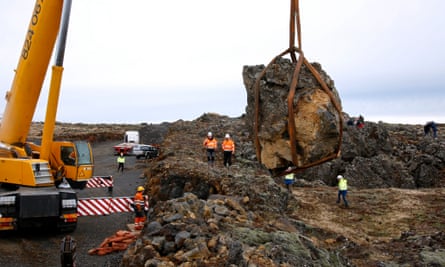
Jónsdóttir teamed up with environmentalist group Friends of the Lava to campaign against the development, organising a protest on behalf of the elves that saw her briefly arrested in 2013. But in the end, she says, her hidden friends settled for a compromise. “They moved their altar and pews out of the rock and have transferred the energy to its new location,” she says calmly, as if describing a neighbour moving house. “The chapel had to be broken in two to be moved, so the elves have a lot of work to do to fix it up inside. But they seem content. It’s always best not to upset them.”
Those who have done so in the past have paid the price. Speak to Icelandic construction workers and they’ll repeat the history of mishaps that have befallen those who failed to heed elven warnings. These are so numerous that even non-believers would rather play it safe than risk incurring the wrath of the huldufólk.
In the 1970s, plans to move a rock out of the way of one major road went awry when a bulldozer inadvertently crushed a waterpipe feeding a fish farm. Some 70,000 trout perished overnight and there were so many other freakish accidents in the following days that the project was abandoned. One workman claims to have been stricken with bad luck ever since.
“There are many stories of machines breaking down and workers becoming ill when they interfere with elf rocks,” says Bryndís Björgvinsdóttir, a writer and folklorist who teaches at the Iceland Academy of Arts in Reykjavik. “The elves are seen as friendly, beautiful creatures, but you have to respect them, or they will take their revenge.”
Together with photographer Svala Ragnars, Björgvinsdóttir has been documenting some of the strange physical consequences of elven intervention in the built environment across the country. There are houses that step back respectfully from knobbly stones, driveways narrowed by great boulders past which cars must deferentially squeeze, and roads that split in two to honour sacred outcrops.
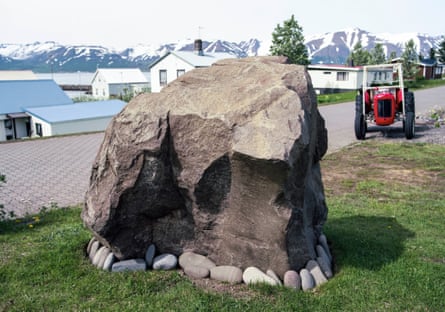
In the town of Hafnarfjörður, just outside Reykjavik, there’s a rock that protrudes so dangerously into the street that passing cars are forced to swerve around it. Look closely and you’ll see a rusty metal peg sticking out of it – a mocking souvenir from the last time someone tried to shift it.
In Kópavogur, south of the capital, a rock known as Elfhill has caused disruption since the 1930s, when attempts to build a road through it were abandoned after a series of accidents. Plans to level the hill re-emerged in the 1980s, but problems recurred and workers refused to go anywhere near it. Even TV crews said their cameras failed to record anything when pointed at the rock. A road was finally built skirting round the protrusion – drive along it and you’ll notice that the house numbers skip a plot, in deference to the invisible neighbours who ultimately had their way.
“Companies planning large scale projects now try to pre-empt problems with the supernatural world,” says Terry Gunnell, professor of folklore at the University of Iceland. “For the huge Kárahnjúkastífla dam project in the east, consultants with clairvoyant skills were hired to check out the landscape first to ensure it was empty of elvish rocks. There’s now money to be made in this sort of consultancy work.”
There are legal battles to be had, too. A conservation act was introduced in 1990 with a clause protecting sites traditionally deemed to have supernatural significance – on the proviso that they have been associated with such phenomena for at least 100 years. Ragnheiður Traustadóttir, an archaeologist, has voiced doubts about Ófeigskirkja. “A study of sources indicates unambiguously that there were no tales of elves connected to Ófeigskirkja until recently,” she wrote in the 2010 Yearbook of the Icelandic Archaeological Society. “It could not be deemed a site of supernatural significance under the Act until 2109.”
Gunnell elaborates: “It has caused a lot of arguments, as it’s something that’s very difficult to prove. Iceland is full of álagablettir, or enchanted spots, places you don’t touch – just like the fairy forts and peat bogs in Ireland. They’re protected by stories about the bad things that will happen if you do. This word of mouth, passed down over generations, is usually more effective than an official preservation order.”
The Icelandic Road and Coastal Administration is so used to dealing with enquiries it now has a standard response to journalists: “It cannot be denied that belief in the supernatural is occasionally the reason for local concerns and these opinions are taken into account just as anybody else’s would be.” In the past, it adds, “issues have been settled by delaying construction projects so that the elves can, at a certain point, move on.”
It should be no surprise that elven belief persists, given its power to stand up to the march of the bulldozer. Iceland’s miracle economic boom and sudden catastrophic collapse has left the countryside scarred by out-of-town sheds and crisscrossed by ribbons of tarmac, still waiting for the planned suburbs to materialise. As gatekeepers of pastoral values with a deep respect for the natural landscape, the hidden people are handy agents in the battle to protect the environment.
“The elves stand for living in harmony with nature,” says Kolbrún Oddsdóttir, a landscape architect who worked with a seer to produce a series of tourist maps recording sites associated with elves. “They provide a metaphor for living sustainably with the resources we have. And they’re good for tourism.”
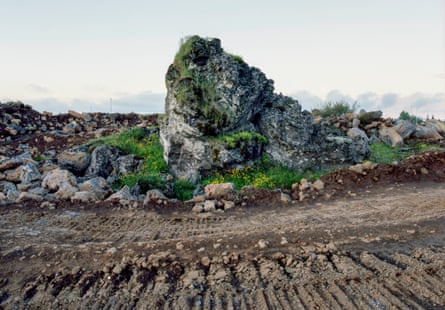
Jacqueline Simpson, visiting professor at the University of Chichester’s Sussex Centre for Folklore, Fairy Tales and Fantasy, sees elf popularity growing in line with a wave of nostalgia sweeping the country. “They’re a symbol for everything that was simple and straightforward in the good old days,” she says. “They were originally figures of magical wealth and prosperity, when Iceland was terribly poor. For rural farmers, starving in their turf-houses, the elves embodied the dream of a richer, more comfy world, a parallel community enjoying palatial homes and fine food.” But now they serve the opposite role. The huldufólk are forever clothed in 19th-century peasant costume, an image of parsimony in the days before our era of reckless excess.
In a survey conducted by Gunnell’s team at the University of Iceland in 2007, over 80% of respondents refused to deny the existence of elves (only 8%, however, said they were certain they existed). “It’s about respect for nature, which is something Icelanders know is very much alive,” says Gunnell. “When your house can be destroyed by an earthquake, when you can can be blown over by the wind, when boiling water from your taps tells you there’s lava not far beneath your feet – then you don’t mess with nature.”
How does he imagine the modern elf? “Our image of the hidden people is stuck in the sepia photographs of folktale collections,” he says. “But I reckon they’re now living between our floors, like in Being John Malkovich, watching their own little satellite televisions.”
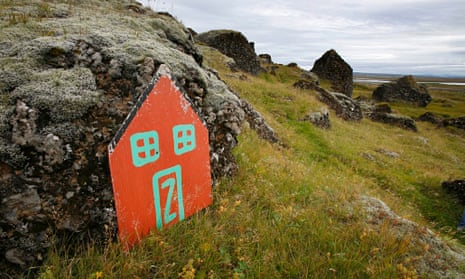
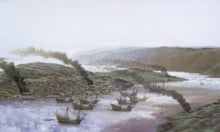

Comments (…)
Sign in or create your Guardian account to join the discussion